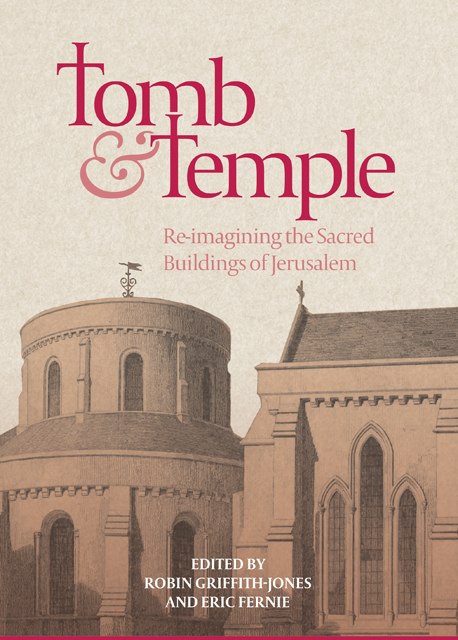Book contents
- Frontmatter
- Contents
- Illustrations
- Preface
- Contributors
- Abbreviations
- Editors’ Note
- Introduction
- Part I Re-presenting Jerusalem
- Part II The Church of the Holy Sepulchre
- Part III The Noble Sanctuary / The Temple Mount
- Part IV The Orthodox Churches
- Part V Round Churches in the West
- Appendix: The Knights’ Effigies: Newly Discovered Drawings by John Guillim, c. 1610
- Epilogue
- Index
- Already Published
17 - The Military Orders and the Idea of the Holy Sepulchre
Published online by Cambridge University Press: 17 January 2023
- Frontmatter
- Contents
- Illustrations
- Preface
- Contributors
- Abbreviations
- Editors’ Note
- Introduction
- Part I Re-presenting Jerusalem
- Part II The Church of the Holy Sepulchre
- Part III The Noble Sanctuary / The Temple Mount
- Part IV The Orthodox Churches
- Part V Round Churches in the West
- Appendix: The Knights’ Effigies: Newly Discovered Drawings by John Guillim, c. 1610
- Epilogue
- Index
- Already Published
Summary
It has long been suggested that London’s round churches were in some sense ‘copies’ of the Holy Sepulchre in Jerusalem, but exactly how this came about and what it really means has not been clearly defined.
The starting point for any investigation is that round churches are the exception rather than the rule in medieval architecture. The Roman origin of the traditional Christian basilican form is undisputed, but the Romans built round buildings as well, the most famous of which, the Pantheon in Rome, was converted into a church. They also constructed round buildings specifically as tombs or mausolea, such as the Mausoleum of Hadrian in Rome. Round temples and mausolea were probably the source for some round churches, such as the early example in Rome, Santo Stefano Rotondo, dating from the time of Pope Simplicius (468–83). The most famous early Christian round structure, also derived from Roman mausolea, was that built over the tomb of Christ in Jerusalem by the Emperor Constantine [Colour Pls II–IV, Figs 3.3–3.10, pp. 82–8 above].
Despite these examples, round churches remained rare in the Western world throughout the first millennium. However, there is a concentration of medieval round churches either extant or recorded in England – the total is fifteen – and this is more than in any other region of comparable size in Europe. London in the twelfth century possessed three (and possibly four) round churches, all just outside the city walls and each one probably visible from the other. The sudden appearance of these round churches is traditionally associated with the Hospitallers and Templars.
The military orders, which emerged as a consequence of the First Crusade, normally adopted churches of a traditional basilican form. The majority of both Hospitaller and Templar churches and preceptory chapels are not round, including those that date from the twelfth century. There are none in the Holy Land, and in Europe there are not very many, apart from the extant church at Tomar in Portugal and the lost Templar church in Paris. Tomar is hexagonal on the exterior and more likely to be thirteenth than twelfth century, since its closest relation is the Templar church of Vera Cruz near Segovia in Spain, which was consecrated in 1208.
- Type
- Chapter
- Information
- Tomb and TempleRe-imagining the Sacred Buildings of Jerusalem, pp. 339 - 351Publisher: Boydell & BrewerPrint publication year: 2018
- 1
- Cited by



